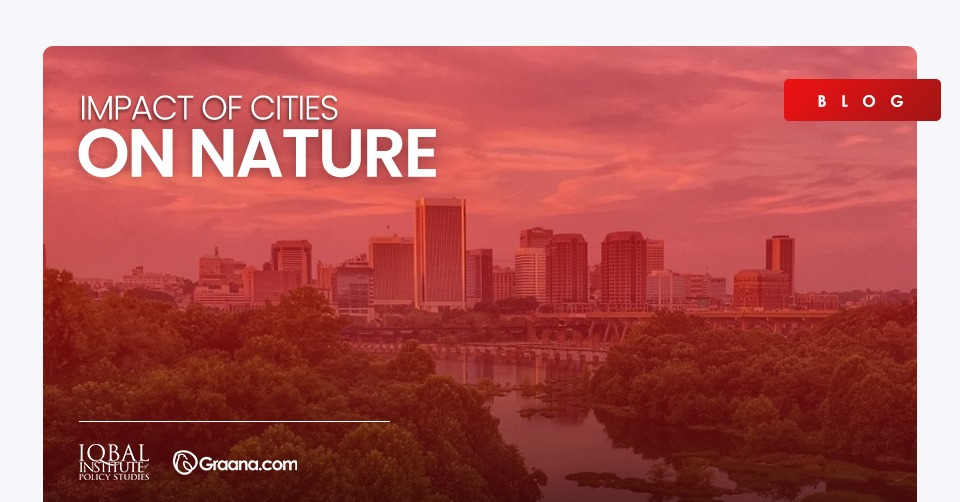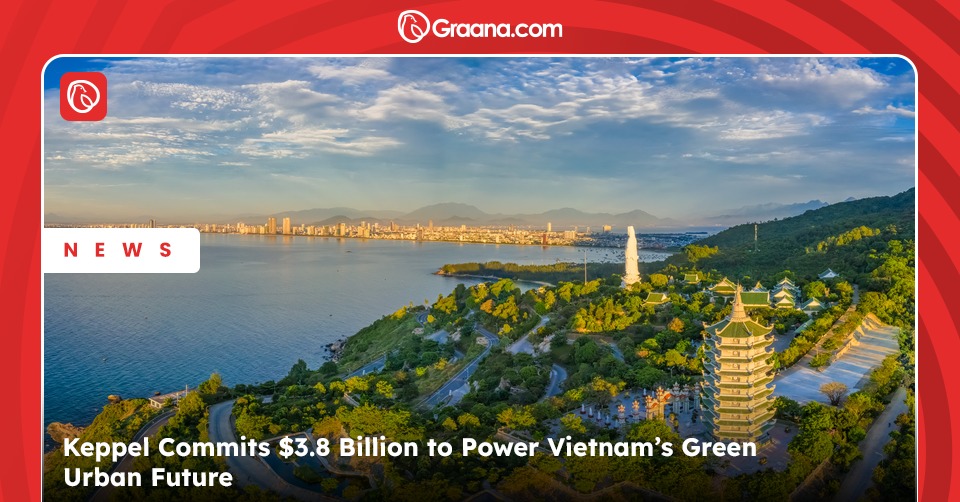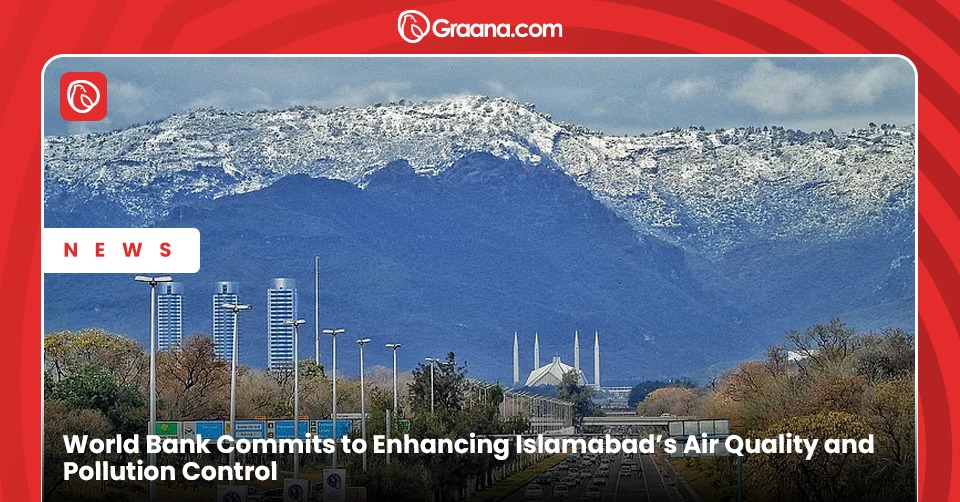Cities are critical for an economically viable, socially superintended, and environmentally sustainable future. However, developing cities are growing quickly and erratically, making the nexus between urban areas and the environment more relevant.
As a result, it is difficult to reconcile with the growing number of resources consumed and waste produced as ecosystems have to adapt and adjust due to urban problems and lifestyles, consumption patterns, and the development of cities as the preferred human settlement.
This subvert’s nature’s capacity to control greenhouse gas (GHG) emissions and defend against extreme weather, speeding up climate change and increasing vulnerability to it. Governments worldwide are acutely aware of the need to improve the quality of life for urban residents while simultaneously reducing adverse effects on the local environment.
Thus, the implications of these changes in urban contexts must be urgently considered. Cities need to be remodelled or designed from the ground up to use resources sustainably, increase inclusion, and protect biodiversity. This will enhance the city’s leadership in multiple fields, setting sustainability and net zero emissions targets and conserving natural habitats in the long run.
Graana.com, in collaboration with the Iqbal Institute of Policy Studies, discusses the impact of nature on cities.
What is the Impact?
Urbanisation is Declining Biodiversity
Cities have traditionally been built in or close to ecosystems that offer a plethora of advantages to urban societies, such as water, food, and places insulated from severe weather events.
This innate layer supporting the built environment has deteriorated due to urbanisation’s direct and indirect effects. 56% of the world’s population lives in cities, expected to double by 2050, with nearly 7 out of 10 people living in cities (The World Bank, 2022).
The most visible consequence of rapid urbanisation on biodiversity is the degradation of natural habitats, impairing the genetic and functional diversity of flora and fauna, native habitats, and the quality of the air and waterways.
Of the 423 cities in biological hotspots worldwide, 383(90%) are expected to grow and expand into tropical moist forest biomes, primarily in low-and middle-income countries (World Economic Forum, 2022).
Induces Climate Change
Urbanisation indirectly aggravated the pace of climate change leading to biodiversity loss. Ecosystems are being harmed by climate change everywhere, from the poles to the tropics. A seemingly small temperature change can dramatically affect the environment and food webs.
For example, the number of live coral reefs has decreased by almost half over the past 150 years, and further warming threatens to wipe out nearly all of the remaining reefs (United Nations, 2022). Anthropogenic climate change is already affecting species by restricting their capacity to adapt to their environments.
At least 10,967 species on the International Union for Conservation of Nature (IUCN) Red List of Threatened Species are currently impacted by climate change, increasing the likelihood of their extinction (IUCN, 2021).
Contributes Towards Global Carbon Emissions
Cities account for over 70% of global CO2 emissions, mostly from industrial and motorised transport systems (Dasgupta, Lall, & Wheeler, 2022). Increased greenhouse gas (GHG) concentrations in the atmosphere impact biodiversity by raising mean temperatures, changing precipitation patterns, amplifying the frequency of extreme weather events, and acidifying aquatic environments.
It also increases the risk of wildfires. Wildfires worldwide emitted 1.76 billion tonnes of carbon in 2021 (Shivanna, 2022). Over a billion native animals were killed in Australia during the 2020 fires, and some species and ecosystems may never recover (Shivanna, 2022).
Moreover, Amazon used to absorb 5% of annual CO2 emissions, but in 2022, 1,500 square miles of Amazon forest were destroyed, an area larger than Beijing’s size (The World Bank, 2022).
Intense Land Use
Over 55% of the global population lives in urban cities, which will increase to 80% by 2050 (Venditti, 2022). As the urban population increases, the consumption of materials will also increase from 41.1 billion tonnes in 2010 to 89 billion tonnes by 2050 (Venditti, 2022).
The extension of urban land utilisation outturns population growth by 50%, adding 1.2 million km2 of new-urban built-up area worldwide by 2030 (The World Bank, 2022). Such activities strain land and natural resources, leading to infelicitous consequences.
According to United Nations, approximately 1 million animals and plant species are about to become extinct due to rapid urbanisation (World Economic Forum, 2022). Cerrado, Brazil, has lost 6 million hectares of native vegetation due to intense human activities, livestock, wildfires, and the invasion of exotic species (WWF, 2022).
Alters Composition and Abundance of Specie Assemblage
When urban land displaces natural habitats, the type of habitats available, their spatial arrangements, and the degree of interconnectedness is permanently altered, leading to substantial changes in the abundance and composition of species assemblages.
With the growth in urbanisation, the percentage of invasive species is also increasing, as urban areas tend to support invasive species more. Native species richness generally decreases as urban land-use intensity increases.
In addition, urban land can push phenotypic adaptations, resulting in rapid eco-evolutionary change. These biota effects lead to worldwide biodiversity loss.
For example, urban land expansion resulted in the loss of approximately 190,000 km2 of habitat between 1992 and 2000, accounting for 16% of total habitat loss during this period (Simkin, Seto, McDonald, & Jetz, 2022).
How Can Cities Protect Nature/Biodiversity?
Expanding Green Areas
Providing opportunities for wildlife to travel and obtain new food and water sources and mates is critical for urban biodiversity. Cities can protect biodiversity by establishing green corridors and linear parks that link up green spaces within the city, promoting healthy biodiversity and the preservation of these vital ecosystems.
Integrating existing forests, wetlands, and even water retention ponds within a site or nearby space that is already susceptible to sustaining wildlife and extending green areas in and around cities can help protect biodiversity despite the increasing population density.
Citizen Awareness
Awareness regarding the protection of flora and fauna through educational campaigns from grass root level shall be made mandatory. For instance, encouraging citizens not to clean up fallen leaves to protect insect life.
Singapore has created an app that allows people to send photos of plants and animals to a central database allowing the government to manage biodiversity information which aids in the decision-making process and identifies knowledge gaps in biodiversity conservation programs (World Economic Forum, 2022)
Protecting trees
Instead of being felled and removed, dead or diseased trees with cavities should be preserved because they shelter many different bird and small mammal species and are a haven for numerous other organisms.
Decaying trees can provide habitat for wildlife for up to 30 years before returning to the soil as organic matter and continuing the life cycle (World Economic Forum, 2022).
Urban Development Policies
Urban greening initiatives should be incorporated into regional planning frameworks and master plans, as well as other sector policies pertaining to housing, transportation, health, sustainability, biodiversity, and so forth. Collaboration across sectors among local governments, community organisations, and private actors can also help the interventions achieve various goals.
Conclusion
Metropolitan cities once had forests, marshes, and wetlands supporting millions of species. However, with the growing population, urban areas expanded haphazardly, leading to environmental degradation and severe climate change.
Owning to the threats of climate change, policymakers worldwide are adopting climate mitigation and biodiversity conservation measures to ensure a sustainable future.
However, a collaboration between the government, private sector, and citizens is urgently needed to protect existing biodiversity within and around cities to ensure a greener and safer future.




